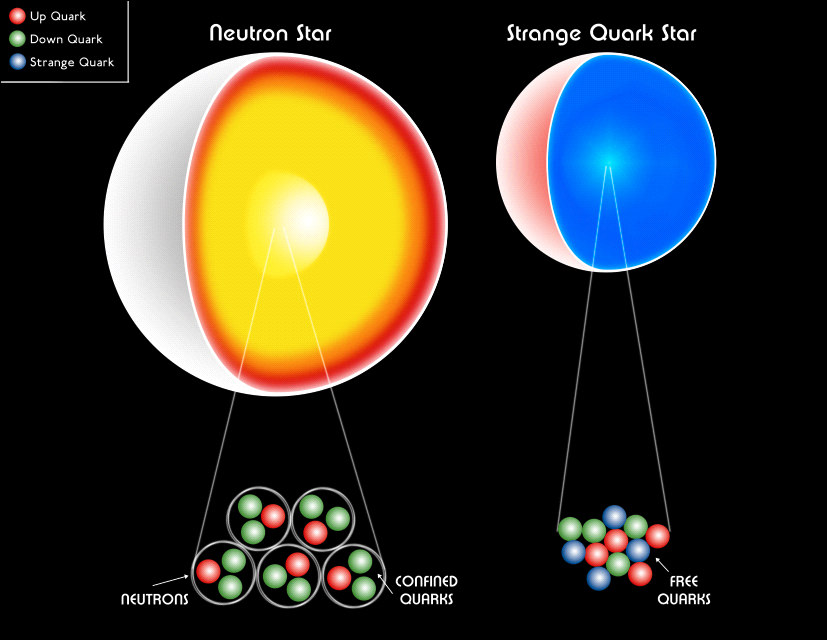
(Caption) One step closer to a black hole? A hypothetical strange star results from extreme gravitational compression overcoming the strong interaction that holds neutrons together. Credit: Swinburne University - astronomy.swin.edu.au
Atoms are made of protons, neutrons and electrons. If you cram them together and heat them up you get plasma where the electrons are only loosely associated with individual nuclei and you get a dynamic, light-emitting mix of positively charged ions and negatively charged electrons. If you cram that matter together even further, you drive electrons to merge with protons and you are left with a collection of neutrons – like in a neutron star. So, what if you keep cramming that collection of neutrons together into an even higher density? Well, eventually you get a black hole – but before that (at least hypothetically) you get a strange star.
The theory has it that compressing neutrons can eventually overcome the strong interaction, breaking down a neutron into its constituent quarks, giving a roughly equal mix of up, down and strange quarks – allowing these particles to be crammed even closer together in a smaller volume. By convention, this is called strange matter. It has been suggested that very massiveneutron stars may have strange matter in their compressed cores.
However, some say that strange matter has a more fundamentally stable configuration than other matter. So, once a star’s core becomes strange, contact between it and baryonic (i.e. protons and neutrons) matter might drive the baryonic matter to adopt the strange (but more stable) matter configuration. This is the sort of thinking behind why the Large Hadron Collidermight have destroyed the Earth by producing strangelets, which then produce a Kurt VonnegutIce-9 scenario. However, since the LHC hasn’t done any such thing, it’s reasonable to think that strange stars probably don’t form this way either.
More likely a ‘naked’ strange star, with strange matter extending from its core to its surface, might evolve naturally under its own self gravity. Once a neutron star's core becomes strange matter, it should contract inwards leaving behind volume for an outer layer to be pulled inwards into a smaller radius and a higher density, at which point that outer layer might also become strange… and so on. Just as it seems implausible to have a star whose core is so dense that it’s essentially a black hole, but still with a star-like crust – so it may be that when a neutron star develops a strange core it inevitably becomes strange throughout.
Anyhow, if they exist at all, strange stars should have some tell tale characteristics. We know that neutron stars tend to lie in the range of 1.4 to 2 solar masses – and that any star with a neutron star's density that's over 10 solar masses has to become a black hole. That leaves a bit of a gap – although there is evidence of stellar black holes down to only 3 solar masses, so the gap for strange stars to form may only be in that 2 to 3 solar masses range.
No comments:
Post a Comment